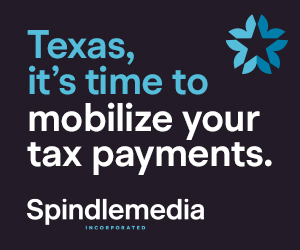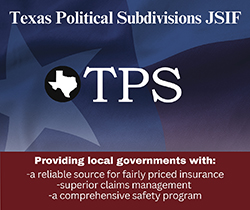The following is an excerpt of the latest property tax report. To view the text in full, go to www.window.state.tx.us/taxinfo/proptax/annual09/.
Focus on Local Taxes Statewide
Texas local units of government rely heavily on property tax to fund their operations. Nearly 4,000 separate taxing jurisdictions impose a property tax; these include counties, school districts, cities and special-purpose districts, such as junior colleges, hospitals, utilities, flood control and emergency service districts.
In addition to property tax, the Texas Constitution and Legislature empower local governments to impose, levy and collect other taxes and fees that supplement their operations.
The local property tax remains the largest tax assessed in Texas. Statewide, property taxes levied by local governmental entities exceeded $40 billion in 2009, the most recent year for which the Comptroller has reported data (Exhibit 1).
Exhibit 1
Tax Revenue in Texas by Source, 2009
Type of Tax
Tax
Amount
Percent of
Total Tax
Property Tax
$40,034,355,798
47.80 percent
State Sales Tax
$21,014,065,089
25.09 percent
Local Sales Taxes
$5,903,570,177
7.05 percent
Other State Taxes
$16,808,387,924
20.07 percent
Total Taxes
$83,760,378,988
100 percent
Source: Texas Comptroller of Public Accounts and 2009 Annual Cash Report.
While local property taxes account for almost half of all tax revenue in the state, the state does not set property tax rates or collect property taxes.
The next-largest tax revenue source in Texas is the sales tax, which is imposed by both the state and local governments (except for school districts, which do not have authority to assess a sales tax). In 2009, combined sales tax collections totaled $26.9 billion, or 32.14 percent of all taxes collected in Texas. The bulk of that amount, $21 billion, went to the state, with local governments receiving $5.9 billion. Other state taxes, such as those imposed on motor fuels, cigarettes and utilities, totaled $16.8 billion (20.07 percent). Local governments collect 48 percent of all taxes in the state, while state government takes in 52 percent.
Local Property Tax
The Texas Constitution sets out five basic rules for property taxes.
The first requirement is that property taxes must be equal and uniform. No single property or type of property should be taxed at more or less than its taxable value. Local officials must base property taxes on value. If, for instance, an individual's property is worth half as much as the property owned by his or her neighbor, then – everything else being equal – that individual's tax bill should be one-half of his or her neighbor's. In addition, an appraiser cannot appraise commercial property at 150 percent of market value while appraising residential property at 50 percent of market value.
Second, a local government must generally tax all property on its current market value – the price it would sell for when both buyer and seller seek the best price and neither is under pressure to buy or sell. The Texas Constitution provides certain exceptions to this rule, such as the use of productivity values for agricultural and timber land. This means that governments assess taxes based on the value of what the land produces, such as crops and livestock, rather than its sale value, which is usually higher. The Tax Code requires that taxable value be the lower of productivity or market value.
Third, each property in a county must have a single appraised value. This means that the various local governments that collect property taxes cannot assign different values to the same property; all must use the same value. The Legislature requires CADs in each county to try to guarantee that this occurs.
Fourth, all property is taxable unless federal or state law exempts it from the tax. These exemptions may exclude all or part of a property's value from taxation. Finally, property owners have a right to reasonable notice of increases in the appraised value of their property.
Local governments can assess and collect property taxes for two primary uses. First, they can collect a maintenance and operations (M&O) tax that is used primarily to pay for the day-to-day functions of the government. An interest and sinking (I&S) tax is collected to pay bonds, including interest, sold by the local entity to finance capital projects such as buildings, facilities or other infrastructure. The local government can only use these funds to pay principal and interest on bonds; to cancel and surrender bonds; and to pay the expenses of assessing and collecting these taxes. While I&S property taxes are not the only way for local governments to pay for infrastructure, it is one of the primary tools available for this purpose.
Local Property Tax Levies
In tax year 2009, Texas' local taxing units levied over $40 billion in property taxes, 2.7 percent more than in 2008 (Exhibit 2).
Exhibit 2
Property Taxes Reported by Unit Type, 2008 vs. 2009
Unit Type
2008
Number
of Units
2008
Tax Levy
2008
Percent
of Levy
2009
Number of Units
2009
Tax Levy
2009
Percent
of Levy
Percent Levy Change from 2008 to 2009
School Districts
1,025
$21,233,517,226
54.5 percent
1,025
$21,780,056,204
54.4 percent
2.6 percent
Cities
1,054
$6,451,012,447
16.5 percent
1,059
$6,593,755,037
16.5 percent
2.2 percent
Counties
254
$6,342,704,903
16.3 percent
254
$6,526,724,060
16.3 percent
2.9 percent
Special Districts
1,609
$4,952,734,969
12.7 percent
1,639
$5,133,820,497
12.8 percent
3.7 percent
Total
3,942
$38,979,969,545
100 percent
3,977
$40,034,355,798
100 percent
2.7 percent
Source: Texas Comptroller of Public Accounts
Unlike other local governments, which can also collect sales taxes and fees, school districts' only source of tax revenue is the property tax. In 2009, the state's 1,025 school districts levied almost $21.8 billion in property taxes, or 54.4 percent of all property taxes levied in the state (Exhibits 2 and 3).
Cities collected the second-largest share of the property tax in 2009 – $6.59 billion, an increase of 2.2 percent from the 2008 levy. Counties followed closely behind with a property tax levy of $6.52 billion, 2.9 percent more than in 2008. The levy of special-purpose districts rose by 3.7 percent from 2008 to 2009, to $5.1 billion.
In the last 20 years, property taxes have grown at an average annual compounded rate of 6.58 percent from 1990 to 2009 (Exhibit 4).
During the same 20-year period, special purpose districts saw the highest rate of increase in property tax levies, with an average annual increase of 7.26 percent. Counties followed closely behind with an increase of 7.2 percent, school districts experienced annual compounded rates of 6.48 percent and cities had the lowest annual growth rate, at 5.9 percent.
Exhibit 4
Growth of the Property Tax by Unit Type, 1990-09
Tax Year
Special Purpose District Levy
County Levy
City Levy
School Levy
Total Levy
1990
$1,354,607,273
$1,743,176,612
$2,218,971,749
$6,605,433,619
$11,922,189,253
1991
$1,459,643,501
$1,894,013,461
$2,303,609,801
$7,566,042,099
$13,223,308,862
1992
$1,492,043,534
$1,996,116,460
$2,311,630,199
$8,181,309,478
$13,981,099,671
1993
$1,535,769,813
$2,176,974,573
$2,362,404,482
$8,681,859,148
$14,757,008,016
1994
$1,620,504,796
$2,311,389,149
$2,493,554,910
$9,024,885,601
$15,450,334,456
1995
$1,628,217,607
$2,391,961,283
$2,596,742,540
$9,340,994,056
$15,957,915,486
1996
$1,698,557,436
$2,537,183,937
$2,701,214,386
$9,910,195,171
$16,847,150,930
1997
$1,759,622,591
$2,658,308,076
$2,847,081,480
$10,394,500,372
$17,659,512,519
1998
$1,889,138,306
$2,828,286,927
$3,005,996,060
$11,334,614,289
$19,058,035,582
1999
$2,041,041,011
$2,979,279,400
$3,247,964,177
$12,009,923,498
$20,278,208,086
2000
$2,389,110,312
$3,200,919,731
$3,530,863,516
$13,392,336,012
$22,513,229,571
2001
$2,703,512,059
$3,566,857,130
$3,884,829,249
$15,155,217,587
$25,310,416,025
2002
$2,864,454,984
$3,849,728,346
$4,186,795,363
$16,418,788,831
$27,319,767,524
2003
$3,092,285,295
$4,121,758,950
$4,415,212,819
$17,264,153,972
$28,893,411,036
2004
$3,369,068,834
$4,462,844,074
$4,607,757,531
$18,533,964,802
$30,973,635,241
2005
$3,609,629,697
$4,772,652,208
$4,901,791,597
$20,194,915,813
$33,478,989,315
2006
$3,972,185,910
$5,339,613,542
$5,322,985,519
$20,918,122,059
$35,552,907,030
2007
$4,513,060,409
$5,836,989,949
$5,890,306,731
$18,874,239,532
$35,114,596,621
2008
$4,952,734,969
$6,342,704,903
$6,451,012,447
$21,233,517,226
$38,979,969,545
2009
$5,133,820,497
$6,526,724,060
$6,593,755,037
$21,780,056,204
$40,034,355,798
Average Annual Increase
7.26 percent
7.20 percent
5.90 percent
6.48 percent
6.58 percent
Source: Texas Comptroller of Public Accounts.
Keeping Check on Local Property Tax Increases
The Legislature has provided Texas taxpayers with a mechanism to limit the rate of taxation a local government may adopt. If local taxing units, other than school districts, adopt rates above a calculated rollback rate, taxpayers can petition for a rollback election.
A school district exceeding the rollback rate must hold an election automatically, without any need for a petition process. This allows its voters to decide whether to approve the adopted tax rate or to roll back the tax rate.
In 2009, 48 school districts exceeded the rollback rate, compared with 116 in 2008. Voters in 24 school districts rejected the tax rate proposed by the school board and in 24 elections voters ratified the board's proposed rate. H














